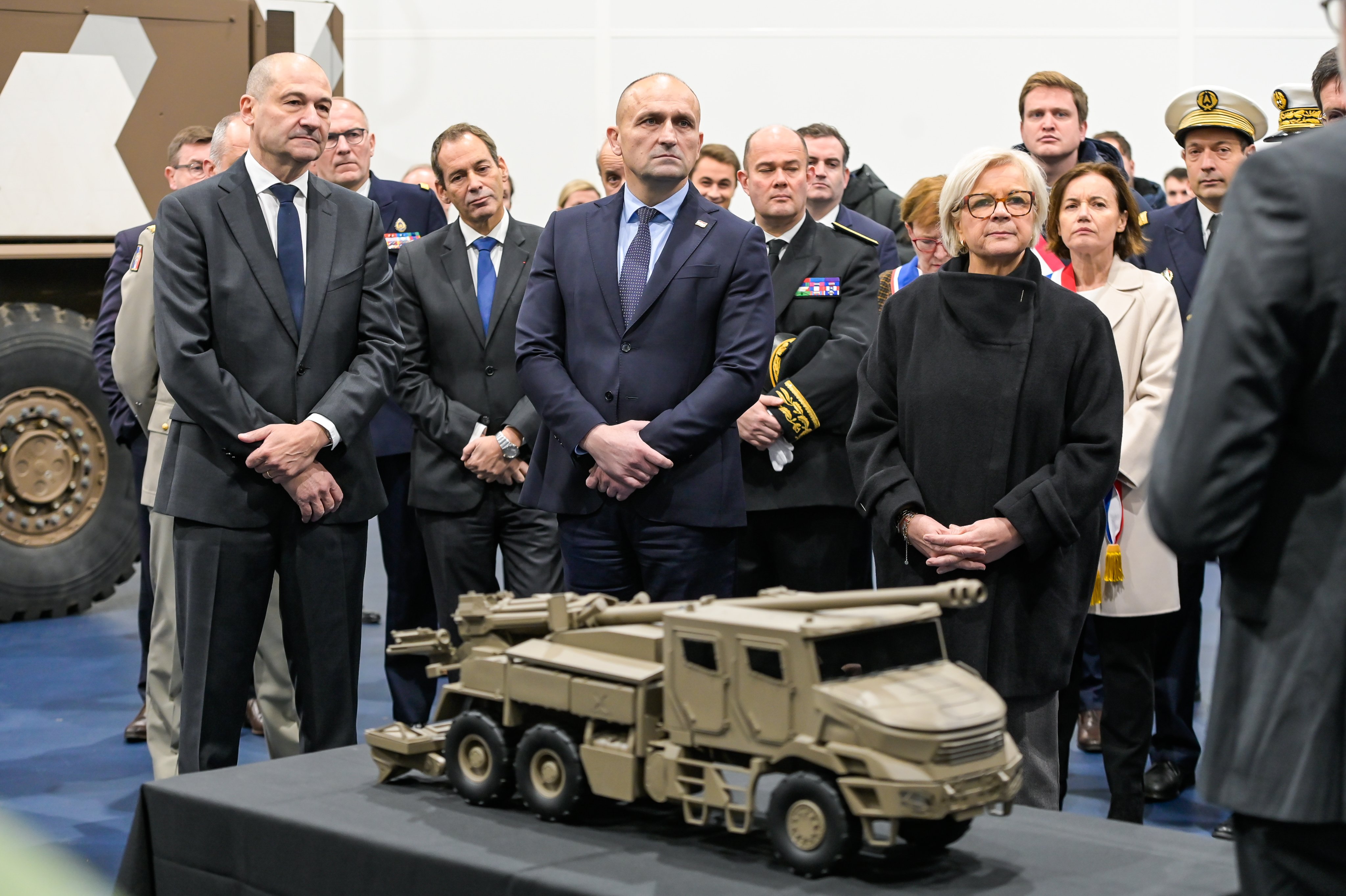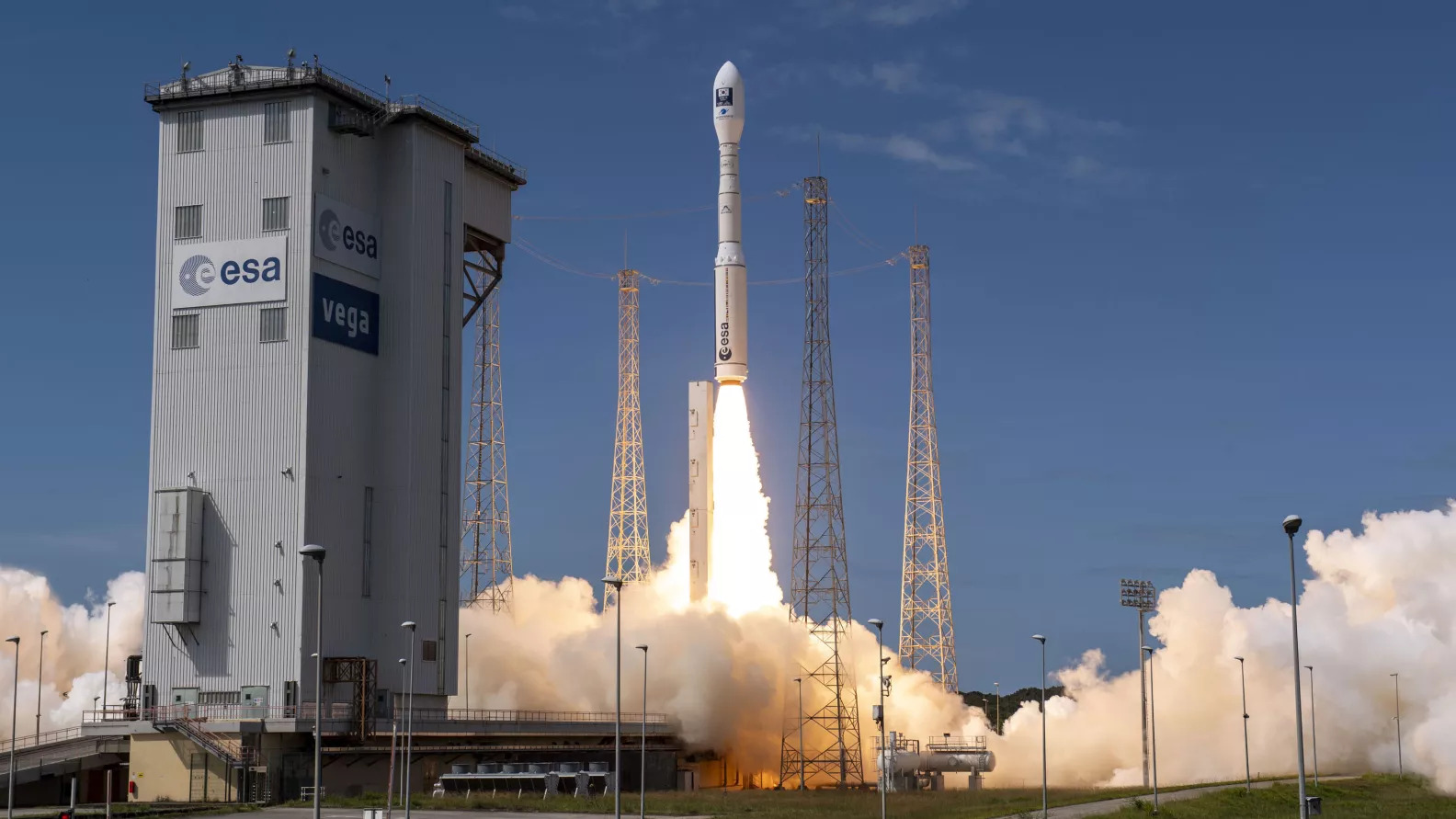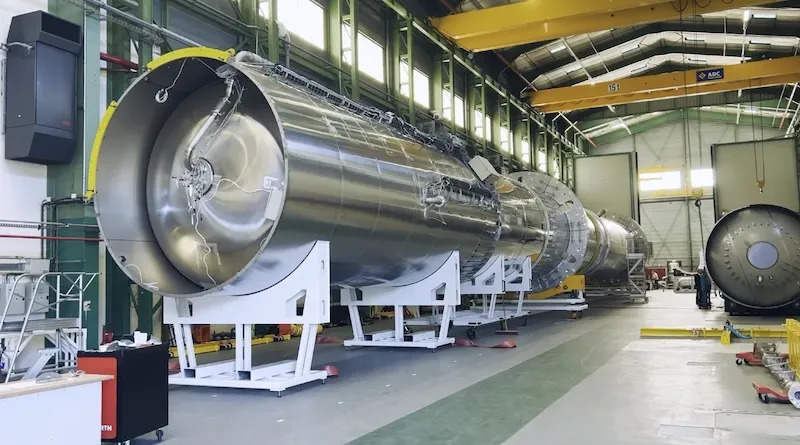A robust and credible ground-based air defence (GBAD) component contributes to control of the third dimension by producing decisive effects on modern battlefields. The stakes of GBAD at the centre of current headquarters’ thought processes are all the more relevant, given current military events.
From Support of Ground-Based Air Defence to Air Superiority
Definition of a defence system is initially established from an assessment of current and future threats. Recent analyses of strategic reviews found them to be the prevalence of extra-territorial terrorist groups threatening French interests. The French forces were therefore shaped to suit the type of operations France conducted in Afghanistan, and still conduct today in Africa. The physiognomy of our forces is of an expeditionary corps sized to respond to asymmetric or guerrilla wars against terrorist groups. Ground-based air defence—GBAD (in French, Défense sol-air—DSA) had no place in this arrangement because of the lack of any definite air threat in external (out-of-country) theatres of operations. Hence GBAD fulfilled its role as an operational link in the homeland air defence chain, primarily in support of the permanent air security posture (PPS Air).(1)
The GBAD component is preparing to join the Combat aircraft brigade (Brigade aérienne d’aviation de chasse—BAAC),(2) at a time when the air threat has been clearly evident for a number of years and we are recognising yet again that in adversity we need a credible and sturdy GBAD to contribute to control of the third dimension and maintain air superiority. After the budget reductions which led in particular to relocalisations and loss of personnel, and the consequential reduced aspiration to establish a massive GBAD force, we are rediscovering the advantages this capability brings in the face of a well-equipped and determined adversary who, with his conquest of the air hampered by these weapons systems, is unable to achieve his desired military effects.
In Nagorno-Karabakh and the use of drones by Azerbaijan, Russian A2/AD(3) (S400 and other systems) used in Syria in particular, the Houthi attacks in Saudi Arabia and the United Arab Emirates (UAE), Ukrainian resistance to overflight of its territory, hypersonic weapons and loitering munitions—all of these examples underline the importance for our deployed troops and for our population to have a credible, agile, multi-layer GBAD which is effective in the long term. The war in Ukraine announced the return of a confrontation between two state armed forces: a high-intensity war, just the type of conflict with which GBAD is intimately associated. Sadly, we are living in a period which suits this specialist component of air defence.
The Expertise of GBAD in the Air and Space Force
The 4 GBAD squadrons (Escadrons de DSA—EDSA) of the Air and Space Force (Armée de l’Air et de l’Espace—AAE) are particular in being multi-missioned and also having multiple systems, with the medium-range ground-to-air Mamba system (Sol-air moyenne portée—SAMP) fitted with Aster 30 missiles, the new generation Crotale NG with its VT1 MO2 missiles and counter-drone/UAV systems (lutte anti-drone—LAD). They contribute to PPS Air, the protection of nuclear-capable air bases, counter-drone activity, the support of operational ground forces and, more recently, to external operations. Moreover, their crews all train effectively to maintain a number of rare skills in terms of electronic warfare, mobility, coordination, tactical data links (TDL), work in non-segregated airspace with friendly combat aircraft and so on. Simulation is a further tool which permits us to maintain our capability to deal with very dense aerial situations, synonymous with saturation attacks of a type to be expected in high-intensity warfare. Attacks by salvoes of cruise or ballistic missiles have always been at the centre of our tactical thought in order to train our personnel for war and to push them to the limit on the principle of ‘training hard for an easy war’.
We are ever-present on operations—indeed, few combat units are are as stretched between operations on national territory, recent returns from external operations, basic training and operational preparation. Such is the complexity of planning that we have little time for training new personnel and repairing materiel.
Looking a little closer at the missions achieved over the years, it is apparent that adaptability and expertise are characteristics of GBAD units. Their operational preparation means GBAD squadrons achieve excellent results during international exercises, such as during Aurora 17 in Sweden, where in under 15 days the deployed unit achieved integration into an air defence network via Link 16(4) to protect the city of Stockholm with a multi-layer layout of Crotale NG and Mamba. This mission demonstrated the skill of the teams in terms of interoperability and logistics and multi-modal transport by rail, road and ship. These high-level exercises contribute to honing the skill of our operators so they can conduct support operations to the PPS Air. It is worth taking note of the extraordinary challenge presented by the deployment of ground-air systems armed with real missiles in the Paris region every year for the 14 July ceremonies: a deployment worthy of war, in peacetime. In parallel, since January 2021 external operations have become daily business for the GBAD: Crotale NG completed an air defence mission for the UAE against attacks from Houthi drones, and since May 2021, GBAD has been supporting NATO reassurance measures on Europe’s eastern flank by securing Romanian airspace 24 hours a day with Aster 30 missiles and radars—an operational mission certified by a number of NATO AIRCOM evaluations.(5)
Multiple Challenges
The multiplication of airborne threats, together with rapid development of adverse modes of operation in an international climate of rearmament, is echoed in the indispensable increase in the GBAD’s activity. The range of threats to be dealt with by air defence, and especially by GBAD, has become very broad and necessitates great adaptability of personnel and systems. The range extends from mini-drones to loitering munitions, from hypersonic missiles to ballistic missiles, not to mention the cyber threat and electronic warfare.
Velocity, saturation and stealth are the three parameters characteristic of the air threat and which dictate the response needed. When these three parameters appear together, interception becomes particularly complex and imposes very short reaction times, which simply confirms the importance of promoting GBAD to front of stage to find appropriate ripostes and technical solutions.
Operational Challenges in an Uncertain World
In an environment of general rearmament and the return of high-intensity conflict on Europe’s doorstep, the challenge presented to GBAD is vast and backs up the principle of multi-layer defence. The short and medium-range components need to be retained and increased in number. Assets would be deployed in national territory for air defence missions and in support of the PPS Air but could also be deployed abroad, as they are today on the eastern flank of Europe. ABM defence will be among the capabilities to be strengthened, with the considerable contribution of SAMP NG (new generation), which will replace the current SAMP Mamba around 2027.
Looking now at countering mini-drone activity, on the French mainland and with inter-ministerial collaboration there are some major events programmed—the Rugby World Cup in 2023 and the Paris Olympic and Paralympic Games in 2024. The transient and many-formed threat of the mini-drone is another distinct operational challenge that has also to be faced in theatres of external operations.
The coordination of ground-air assets is part of a greater entity, Air C2 (Command and Control), which has to incorporate an incredible amount of information to handle threats, maintain the overall picture and, ultimately, engage hostile targets with the most appropriate effectors.
At the same time, we have to prepare for conflicts in which non-standard cases arise and where we have to return to fundamentals and be able to work in highly degraded conditions, as the Serbs had to do when facing NATO aircraft during the battle of Kosovo, and as the Ukrainians are doing today. When communications and data links are jammed, the what ifs? (6) and the rules of engagement drawn up and tirelessly studied during training start to make sense. The cunning, mobility and discretion of ground-based air defence operators will be what makes the difference in waging a kind of guerrilla ground-to-air war, should it be necessary.
Capability Challenges, or the Need for Systems of Systems
To maintain the concept of multi-layer GBAD through an air defence continuum structured on robust C2 it is essential to retain the short-range capability which was to be reduced on retirement from service of the Crotale NG in 2026-2027. A decision has recently been taken to offset the phased withdrawal of the first weapon systems by the purchase of short-range, vertical-launch Intercept, combat and self-defence missile systems (Missile d’interception, de combat et d’autodéfense—MICA). This buffer, or gap-filler, will serve until the arrival of a future system called lower layer ground-air (Sol-air basse couche—SABC), which will not be until around 2035. By continuing the short-range capability of the AAE we will calmly and efficiently be able to mount 3-dimensional air defence protection structures from ground level to space. From 2027 the Samp NG will be introduced into the forces, improving detection capability with the more powerful GF 300 radar and interception capability with the Aster30 B1 NT (block 1, new technology) missile. This new weapon system will bring considerable added value to the battlefield.
Countering drones (the LAD), will also require new, highly adaptable and modulable systems in light of the permanent evolution of the threat. It will be necessary to focus on C2 systems connected to a considerable number of captors and sensors in order to ensure the best results for detection and neutralisation. This concept is already in use with the BASSALT system, which brings together information from various optronic, radar or goniometric sources. Innovation will be the key to avoid lagging behind in the face of a constantly evolving drone ecosystem.
The GBAD’s expertise in coordination, part of the DNA of the Air and Space Force, will be retained in the Centre for 3rd dimension defence management (Centre de management de la défense de la 3e dimension—CMD3D), which again has a strong culture of a system of systems in which integration of all capabilities that react to the various threats will guarantee effectiveness of the command and also reliable, controlled integration of airborne effectors, notably combat aircraft and UAVs.
Challenges of Human Resources (HR)
The GBAD needs experienced personnel, au fait with new forms of conflict and in sufficient number to be trained and to fulfil operational tasking over the long term. The organisational requirements of GBAD squadrons mean much multi-tasking of personnel in order to fully man the teams operating weapons systems round the clock. Our current HR model needs revision and there needs to be considerable effort on recruitment in the coming years across all specialisations—operators, mechanics and network technicians.
Retention of qualified personnel will be a high-priority challenge in view of the amount of training to be completed in order to reach the required operational level. Our operators need to be multi-skilled to be able to communicate with combat aircraft pilots, air controllers, communications specialists, logisticians and their fellow sailors and soldiers, as well as with foreign partners. We are really speaking of a specialisation which combines mobile deployment on the ground, tactics similar to those of combat aircraft crews, control of the third dimension and connectivity using TDL in order to be totally integrated and interoperable. All this demands an extraordinary culture and an exacting ability to adapt—assets worth developing to maintain top-ranking GBAD within the AAE.
Towards More Robust GBAD
Ground-based air defence brings permanence to the field of operation, immediacy of engagement and formidable firepower. The ground-air component is now able to take on this level of coordination and optimisation of air defence cover in non-segregated airspace in real time, particularly through integration with other ground-air components such as the Army’s Mistral very short range surface-air system (Surface air à très courte portée—SATCP). This requires a high level of technical ability and training, and perfect mastery of procedures.
The AAE’s GBAD units mark achievements on every operational deployment. The specialisation demands a broad three-dimensional culture, deep knowledge of TDL and the ability to speak the language of all involved in air operations whilst remaining ground-based combatants. Despite having been kept on national territory for several decades, GBAD has continued to maintain a high level of expertise in weapon systems and unfailing selflessness whilst patiently waiting for a true operational commitment. For about a year, it has been doing exactly that in Romania, and it should be noted that the GBAD is now widely present on operations.
Ukrainian GBAD experience is indicating that we should revise our manuals on air defence. Some people seem to be rediscovering the importance of mobility of weapon systems and of minimising our EM transmissions. Mobility and discretion have been, are and will always be the two parameters to have perfectly under control in order to survive on the battlefield as a GBAD operator. It is enough to look at feedback from the war in Kosovo, in particular the eloquent lesson of the supposedly undetectable F-117 which was shot down by an old-generation Serbian system.(7) There is nothing new in the East.
The Ukrainian GBAD force also relies on the number of weapon systems deployed in the theatre, how they are networked and on the high level of tactical sense of their operators. Feedback is beginning to emerge, but once again we need to analyse it carefully before drawing too-hasty conclusions.
We are now living in an era where weaknesses cannot be hidden. The increasing international tension is revealing our flaws, as are numerous studies and notably the National Assembly’s Committee on national defence and the armed forces,(8) which recommended more materiel and increased manpower. It is high time we strengthened this component! ♦
(1) Posture permanente de sûreté aérienne—PPS: a standing priority mission of the Air and Space Force to ensure the sovereignty of national airspace, ward off air threats and bring assistance to aircraft in distress.
(2) This is one of the consequences of the Altaïr Plan, which aims to bring operational and technical elements together within the BAAC from the summer of 2023.
(3) A2/AD = Anti Access/Area Denial.
(4) Link 16: NATO tactical data link that allows exchange of information between military units integrated into a single network.
(5) See in this volume the article by General Delerce, p. 18-24.
(6) Set of non-standard cases envisaged during preparation of a mission and planned for in order to react as rapidly as possible, should they occur.
(7) The witness:…sorry, we didn’t know your aircraft was invisible, statement noted in 2021 by Lasha Otkhmezuri and Nikola Grgic, Guerres & Histoire n° 70, December 2022, p. 34-42.
(8) Committee on national defence and the armed forces, Mission flash sur la défense sol-air en France et en Europe [Rapid parliamentary enquiry on ground-based air defence in France and Europe] (Rapport d’information n° 866), 15 February 2023, Assemblée nationale (https://www.assemblee-nationale.fr/).











